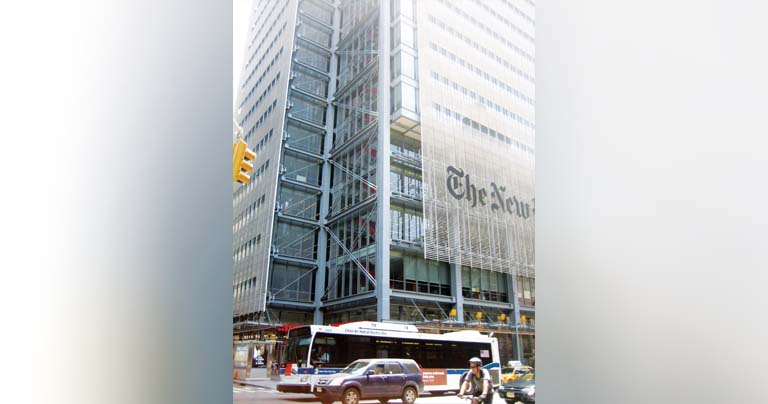With the growing needs of infrastructure, including connectivity and dwelling, the aptness of architectural tension bars will find its space for acceptance towards short span bridges and façades.
Representing Anker Schroeder, Germany in India, Bolin is proud to offer their Architectural range of tension members. Commonly known as ASDO, the tension members from Anker Schroeder are ETA approved which qualifies them technically for usage in even high fatigue environments such as heavy vehicular traffic bridges, subjected to impact loading conditions.
The technology, though being used in India for quite some time now, has somehow found challenges to establish the number of project references like in Europe and North America. Bolin conducted a survey of the past users, as well as potential stakeholders of this technology, and found the following challenges as the primary constraints:
- Feasibility for projects with consumption more than Full Container of bars (~27 MT of assemblies)
- Lack of technical know-how for allied works such as connection plates, primary girder design tweak, tolerances, adjustments etc.
- Indian codal provision not considered in the standard technical data bank of the Manufacturers.
- The regulations and codal provisions practices are skewed across various documents from Eurocode, IRC-24, and IS 800 etc.
- Long lead time and a lot of planning involved. • Past history of undesirable incidents in certain projects where tension bars was used.
Working towards addressing these challenges and getting this globally proven technology in India, Bolin has initiated certain practices which will make use of this technology more so prevalent in Indian projects.
When asked about how these challenges are being addressed by Bolin and Anker Schroeder, Upkar Raut, Founder Principal, Bolin quoted, “For starters, we have developed a ready reckoner which takes into consideration the Indian partial factors per IS 800. The document also provides a quick reference guide for the designers who would want to adopt Architectural bars in their projects. Apart from developing the load table per Indian Partial Factors, the details of connection plates are also featured in this reckoner, along with the standard do’s and don’ts of the application”. When asked on why this document is so thorough on the technical aspects when compared to others, he mentioned, “Any solution is only as good as it is executed on the ground. Many great solutions are not being able to break the inertia in India for the lack of local application support. Bolin with their engineering background strongly believes in going beyond the product supply and hence we call ourselves the solution providers. We not only assist with the technical know-how, but also extend the support to project stakeholders for planning and execution.”
It is noteworthy that despite being a relatively new player in the Indian market, ASDO with a local presence from Bolin is already executing a vehicular traffic bridge project in Western India. Additionally, they are working with some government organisations as well as private developers for their under construction structures.
 With our vision to support India in its world-class infrastructure, we are soon going to have an Indian set-up with a hybrid of Delayed differentiation and Completely Knocked Down components. This initiative will address the challenge of lead time and MoQ. Additionally, it will allow us to participate in medium size projects where the requirement is relatively simple and more skewed towards aesthetics than structural. For example, small span pedestrian bridges, skywalks and cross bracings in a steel PEB structure for convention hall or clubhouse, canopies for swimming pool or common area, glass façade with longer spans, etc. We are confident that once we have the local availability and quicker turnaround, the solutions shall find their way to applications. Our belief is for this solution, having supply will create demand.
With our vision to support India in its world-class infrastructure, we are soon going to have an Indian set-up with a hybrid of Delayed differentiation and Completely Knocked Down components. This initiative will address the challenge of lead time and MoQ. Additionally, it will allow us to participate in medium size projects where the requirement is relatively simple and more skewed towards aesthetics than structural. For example, small span pedestrian bridges, skywalks and cross bracings in a steel PEB structure for convention hall or clubhouse, canopies for swimming pool or common area, glass façade with longer spans, etc. We are confident that once we have the local availability and quicker turnaround, the solutions shall find their way to applications. Our belief is for this solution, having supply will create demand.
These tension bars from ASDO carrying the European Technical Approval (ETA) have been used extensively in Europe, the UK and North America. ETA is the most stringent standard to follow; the presence of these bars in India shall increase the acceptance of this technology. It is more than a decade since these bars were first used for bridges, but the application did not get the momentum it deserved for various reasons cited in the above survey. Sadly, very few initiatives were taken by the market players to develop this solution in India. With the local presence of Bolin and technical expertise, experience and pedigree of ASDO, more projects will see the Architectural tension bars being employed.
When asked about the long-term plan of Bolin, the message was fuelled by the passion that this young company brings to the table. Their spokesperson said, “There is going to be infra demand in India and it is high time to let the fire fighting practices go. We are here to assist the project stakeholders in planning and executing the projects without downtime and compromise on technicalities. With our growing solution portfolio, we look to up our game of project participation right from the foundation to finishing of the structures”.
For more information visit: www.bolin.co.in
Cookie Consent
We use cookies to personalize your experience. By continuing to visit this website you agree to our Terms & Conditions, Privacy Policy and Cookie Policy.

















